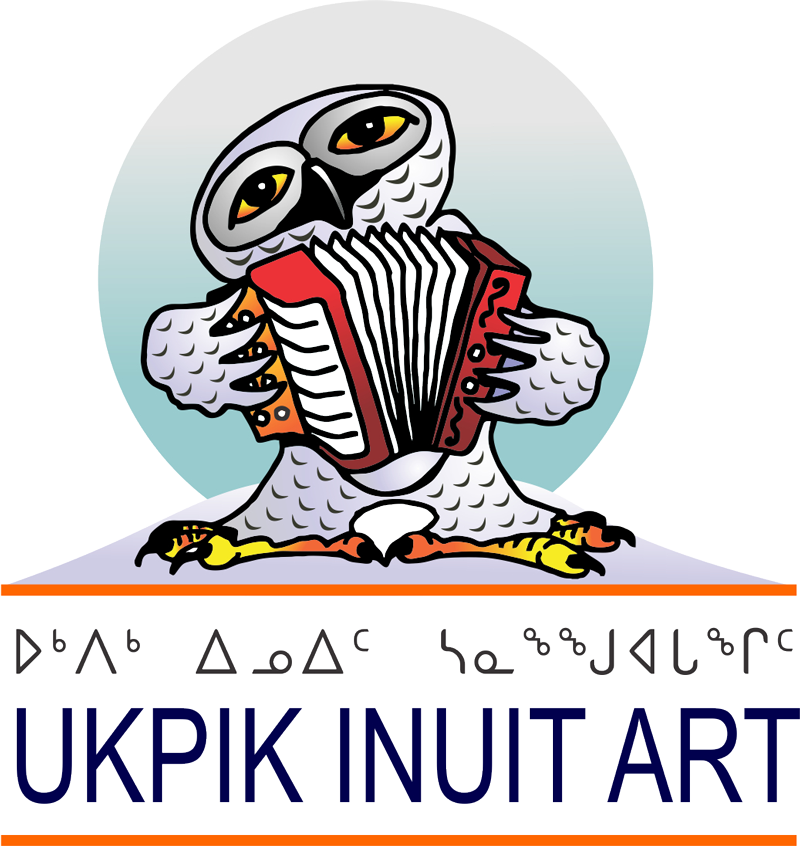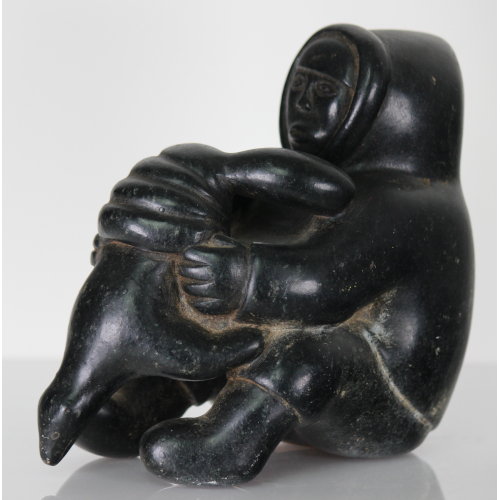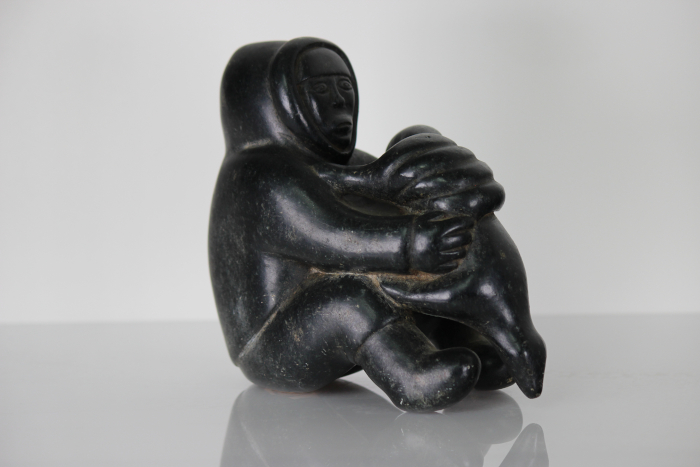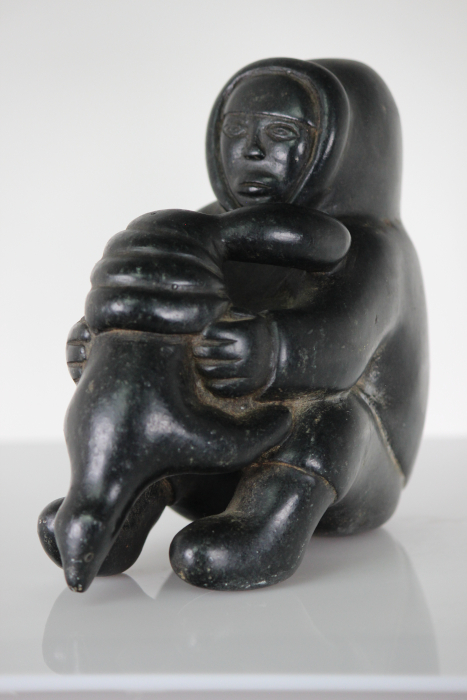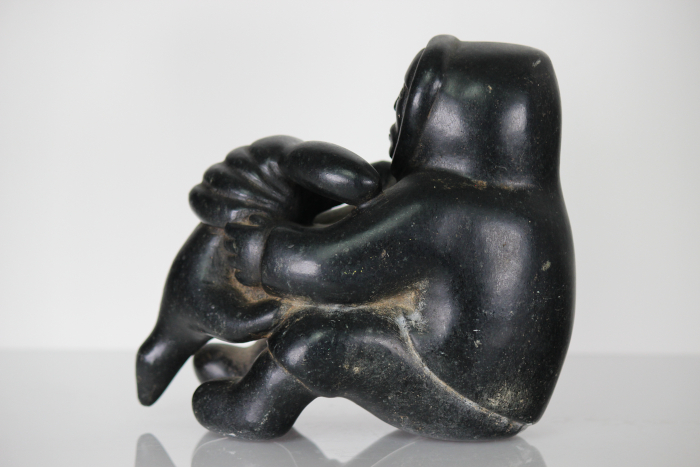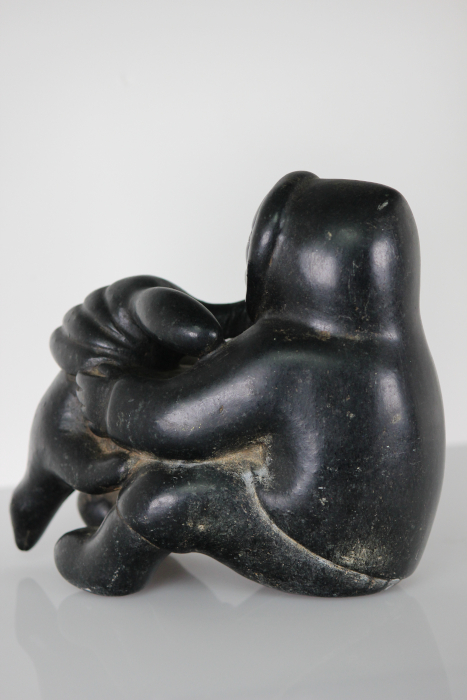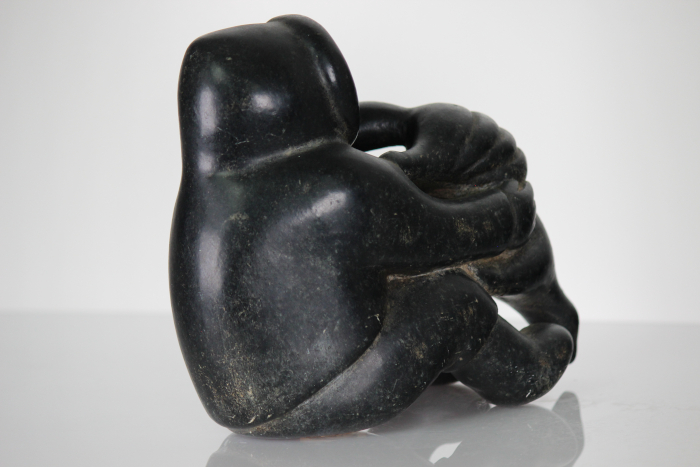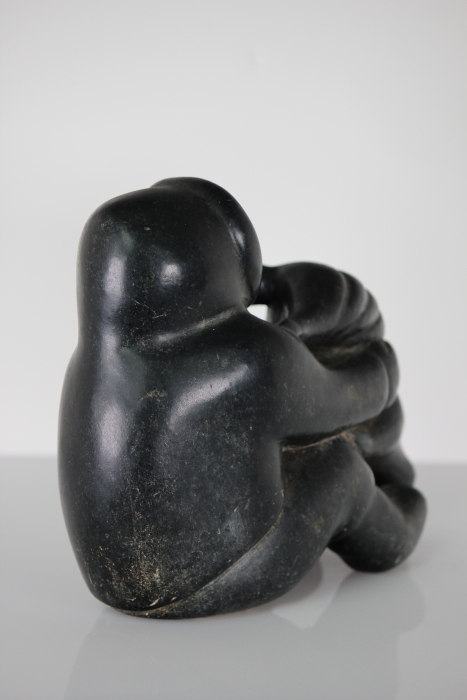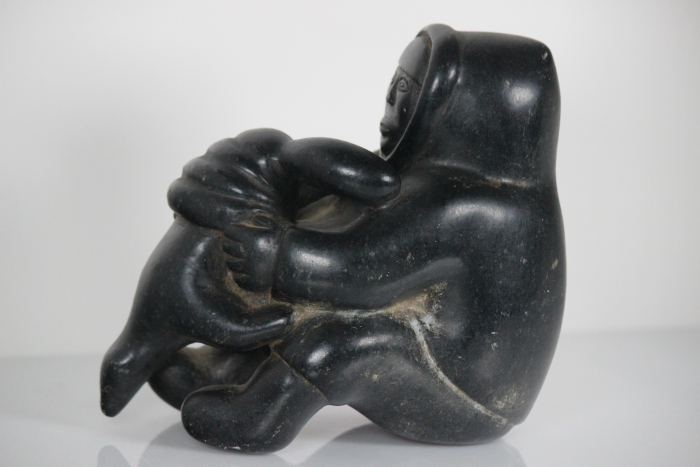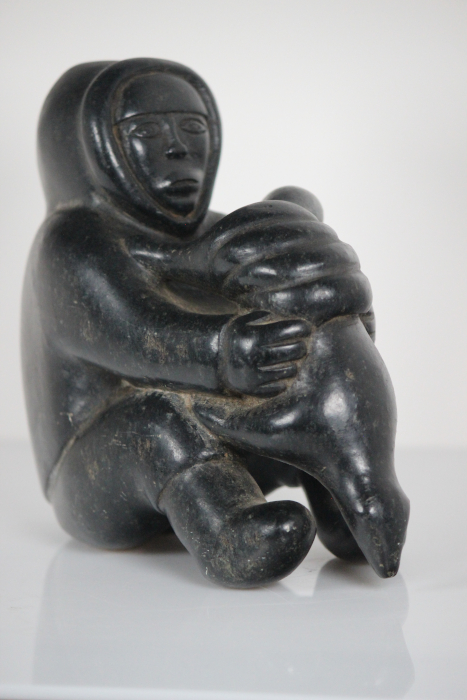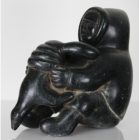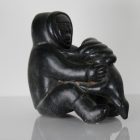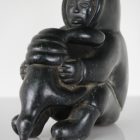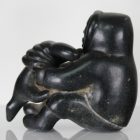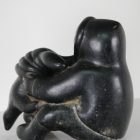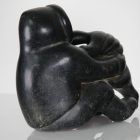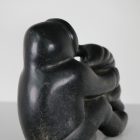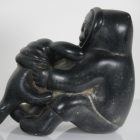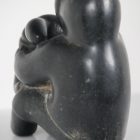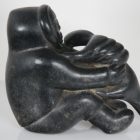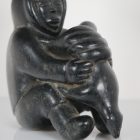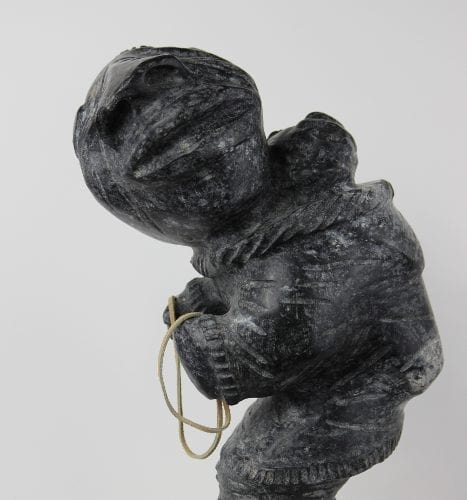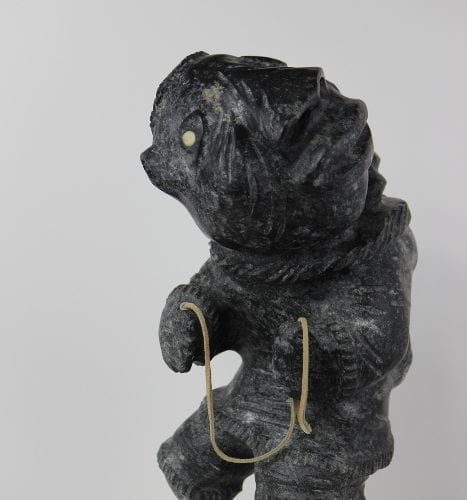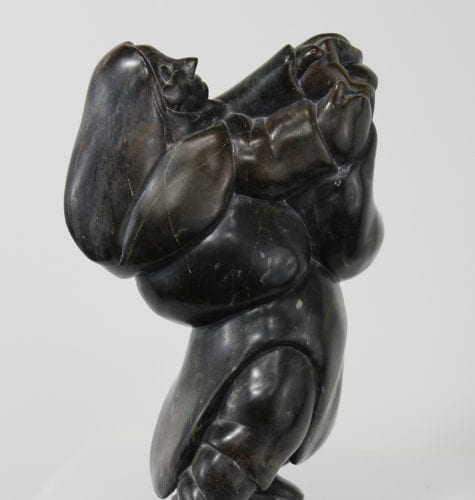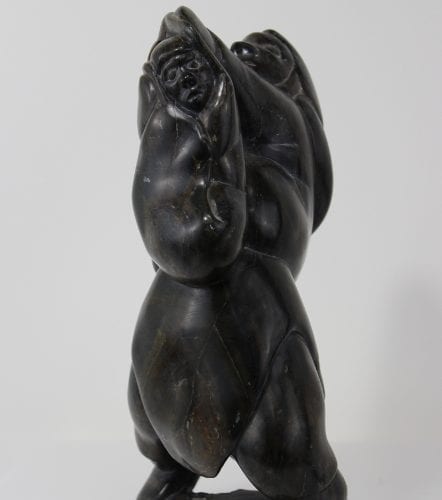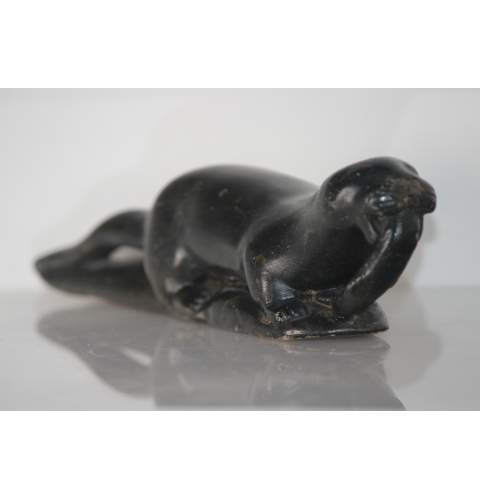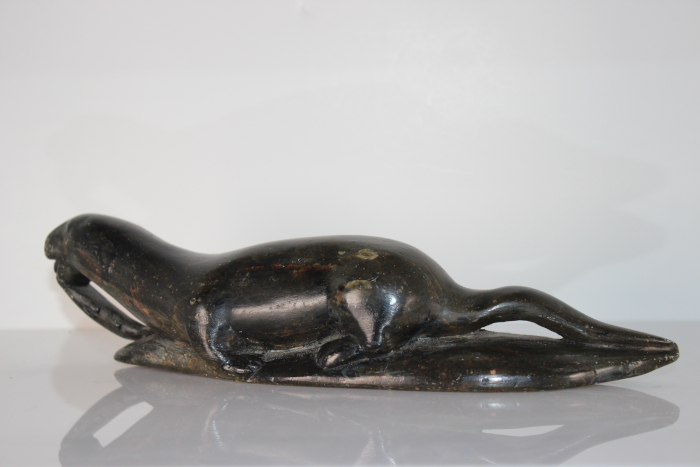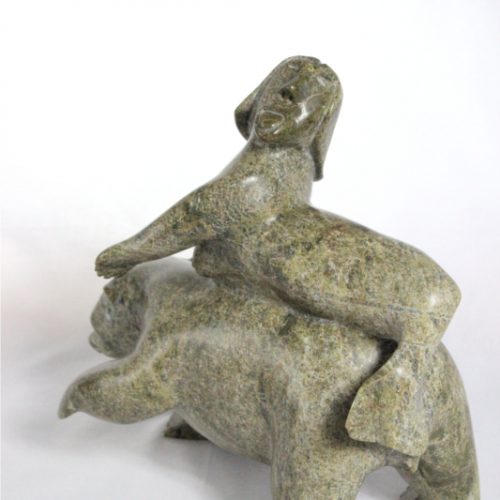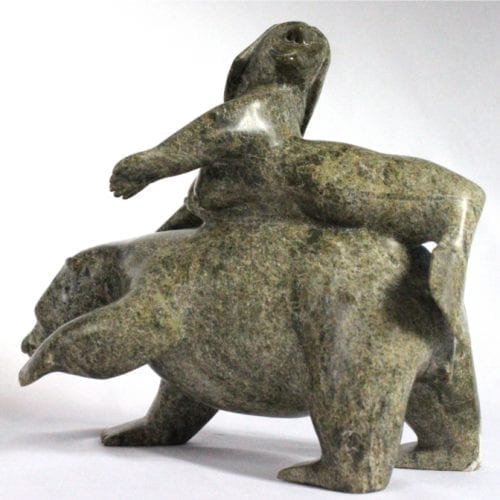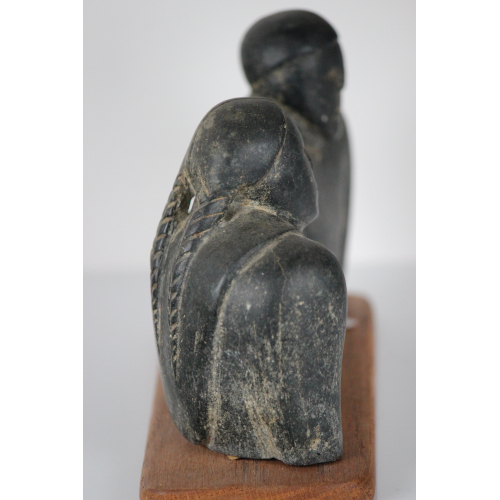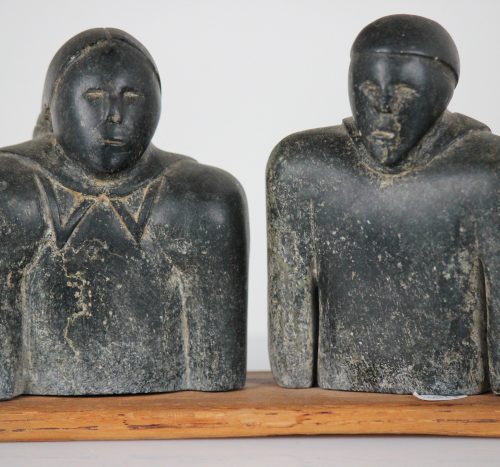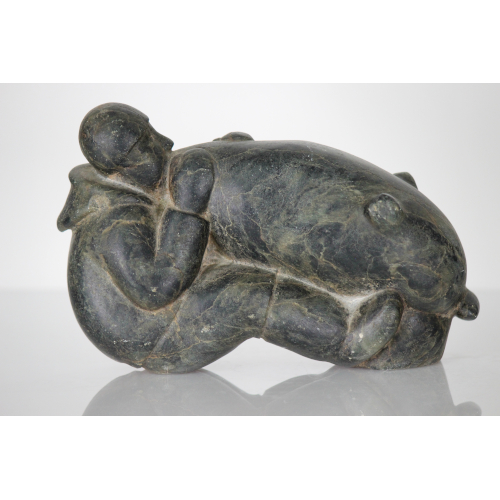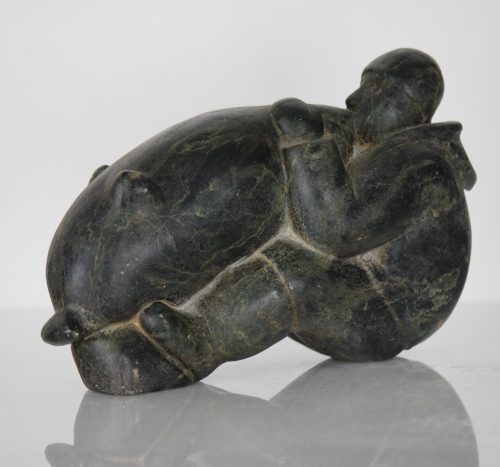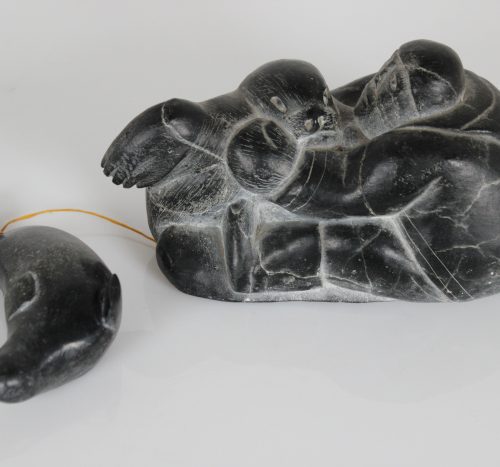Description
This Hunter Skinning Fox by Abraham from Port Harrison (Inukjuak) is another fine old carving that has come to us through a private collector. This carving originates from the 1960’s and the story is that this carving was part of a Canadian National Exhibition of carvers from Povungnituk in the early 60’s. There is not more known about the carver, piece or provenance. This could be a carving contributed to Abraham Pov or Abraham Nastapoka, both from from Inukjuak. A biography for Abraham Pov and Abraham Nastapoka is included in this posting. For collectors of older inuit carvings this would be a wonderful addition to their collection.
Biography Abraham Pov and Abraham Nastapoka
Abraham Pov, ᐊᐃᐊᔭᑲ ᑕᓕᕈᓂᓕ ᐱᐅᕕ
Settlement: Port Harrison / Inukjuak
(1927-1994) — E9-884
“I think his carvings are beautiful because that was his way of supporting the family and I am thankful to him because he carved for us” (Lucy POV Elijassiapik, daughter of Abraham POV, in an interview with Inuit Art Foundation staff in Inukjuak in 2009)
His story
Abraham POV, originally from Puvirnituq, comes from an extended family of prolific carvers. He was the son of the Puvirnituq artist Joe Talirunili, the brother of Sarah Joe Qinnauajuaq, and the nephew of Davidialuk Ammittu. He was born in 1927 in a small camp south of Puvirnituq. He began carving in 1950, shortly after the arrival of James Houston. He was given the name Abraham POV, the abbreviated form of his home community, in order to distinguish him from Abraham Nastapoka. He also made prints, one of which, Building an Igloo, was reproduced on a 17-cent Canadian stamp in 1979. His work is found in many private and public collections throughout Canada. Abraham was also an active member of the community, hunting and helping to build houses.
His art
Celine Saucier, an art historian living in Quebec, describes Abraham POV’s carvings as “compact” (1998:150). His figures, most often women, have grimaces on their faces, a style that some people objected to, but Saucier says “the incised features, the contours of their mouths, eyes, and noses are his signature and his expression of reality as he perceives it. The sincerity and constancy of his approach are demonstrated by the fact that he has never abandoned his personal style of sculpting” (ibid., 150). Darlene Wight, curator of Inuit art at the Winnipeg Art Gallery says that his “later work is characterized by fully carved eyes and down-turned mouths; hoods drape naturalistically, rather than forming a stylized circle as in earlier work” (2006:71).
Abraham’s wife, Alicie, also a carver, closely collaborated with her husband on much of his work. Indeed, she takes some of the credit for his work: “If Abraham was a good carver, it’s because of me. I was the one who put on the finishing touches and I polished them. After he had done the filing, I would put them in water and shine them, and then polish them. I used fine sand and mud to polish the stone… I couldn’t wait for Abraham to finish his carvings so I could sand and polish them” (Darlene Wight interview with Alicie Pov in 2004).
References
Saucier, Celine
1998 Guardians of Memory: Sculpture Women of Nunavik. Quebec: L’instant meme.
Wight, Darlene
2006 Early Masters: Inuit Sculpture 1949-1955. Winnipeg: The Winnipeg Art Gallery.
————————————————————
Abraham Nastapoka
Settlement: Port Harrison / Inukjuak
(1900-1981) — E9-1706
ROOTS
Abraham Nastapoka was a respected hunter and leader of a camp called Patirqtuuq, located in the Nastapoka Islands and River area. In the 1930s, he operated a small shop for the Baffin Trading Company on the Nastapoka River, from which he took his last name.
WHEN AND HOW HE GOT STARTED
Nastapoka began carving at the age of 50, shortly after James Houston’s arrival in Inukjuak.
INFLUENCES
Nastapoka and his wife, Meeko Sarah, worked on carvings together and, undoubtedly, influenced one another. Nastapoka had two sons, Johnny and Davidee, and a daughter, Geela, who also became artists.
MEDIUM
Sculpture.
WORKED UNTIL
about 1974, when pain in his arms forced him to stop carving.
SIGNIFICANT ACHIEVEMENTS
A respected carver, Nastapoka’s work is included in numerous private and public collections throughout Canada.
REFERENCES
Wight, Darlene
2009 Early Masters. Winnipeg: Winnipeg Art Gallery.
